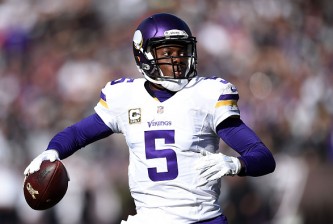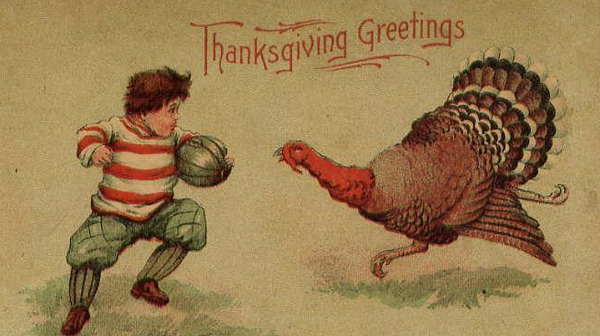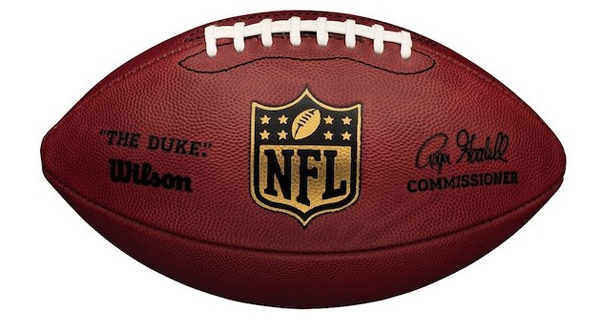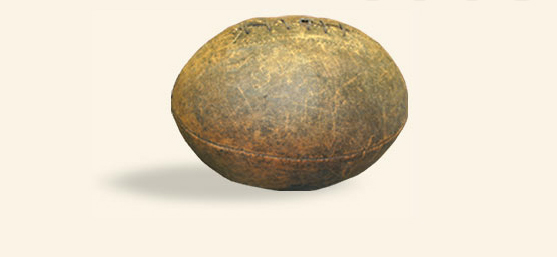“Upon further review” is a new recurring segment in which This Given Sunday analyzes quirks and fascinating tidbits from the NFL’s history books.
Everyone in America is familiar with “The Duke,” right? That’s the name given to the NFL’s current ball, which must be 11-11.25 inches long, have a long circumference between 28-28.5 inches, a short circumference between 21-21.25 inches and must weigh 14 to 15 ounces.
But once upon a time, the balls used during NFL games actually looked and felt a hell of a lot different.
“The Duke” is a prolate spheroid, which is far from the rugby-looking monstrosity above, mainly in terms of shape and texture. It’s not surprising that the old-school balls looked a lot like rugby balls, because we’re talking about a sport that evolved from soccer and rugby.
The Smithsonian website has an interesting guide regarding the evolution of the football, which helps explain why it was so awkward looking in those early years:
Well, it turns out that the football was never truly designed, it just sort of happened. According to Henry Duffield, a man who witnessed a game between Princeton and Rutgers in 1869, largely considered to be the first intercollegiate game:
“The ball was not an oval but was supposed to be completely round. It never was, though — it was too hard to blow up right. The game was stopped several times that day while the teams called for a little key from the sidelines. They used it to unlock the small nozzle which was tucked into the ball, and then took turns blowing it up. The last man generally got tired and they put it back in play somewhat lopsided.”
So according to that story, the football that bounces erratically all over a field and can fly through air in a perfect spiral is not, in fact, the product of high design. At least not initially. Rather, it’s the result of a leaky sphere and some lazy inflaters.
It wasn’t until 1934 when the league mandated size and inflation restrictions. At that same point, the ball was made longer and slimmer for obvious reasons. The forward pass was becoming more trendy in those early days — have you ever tried to throw a soccer ball accurately with one hand?
(Pictures of the old balls courtesy of Jacksonville.com)


























